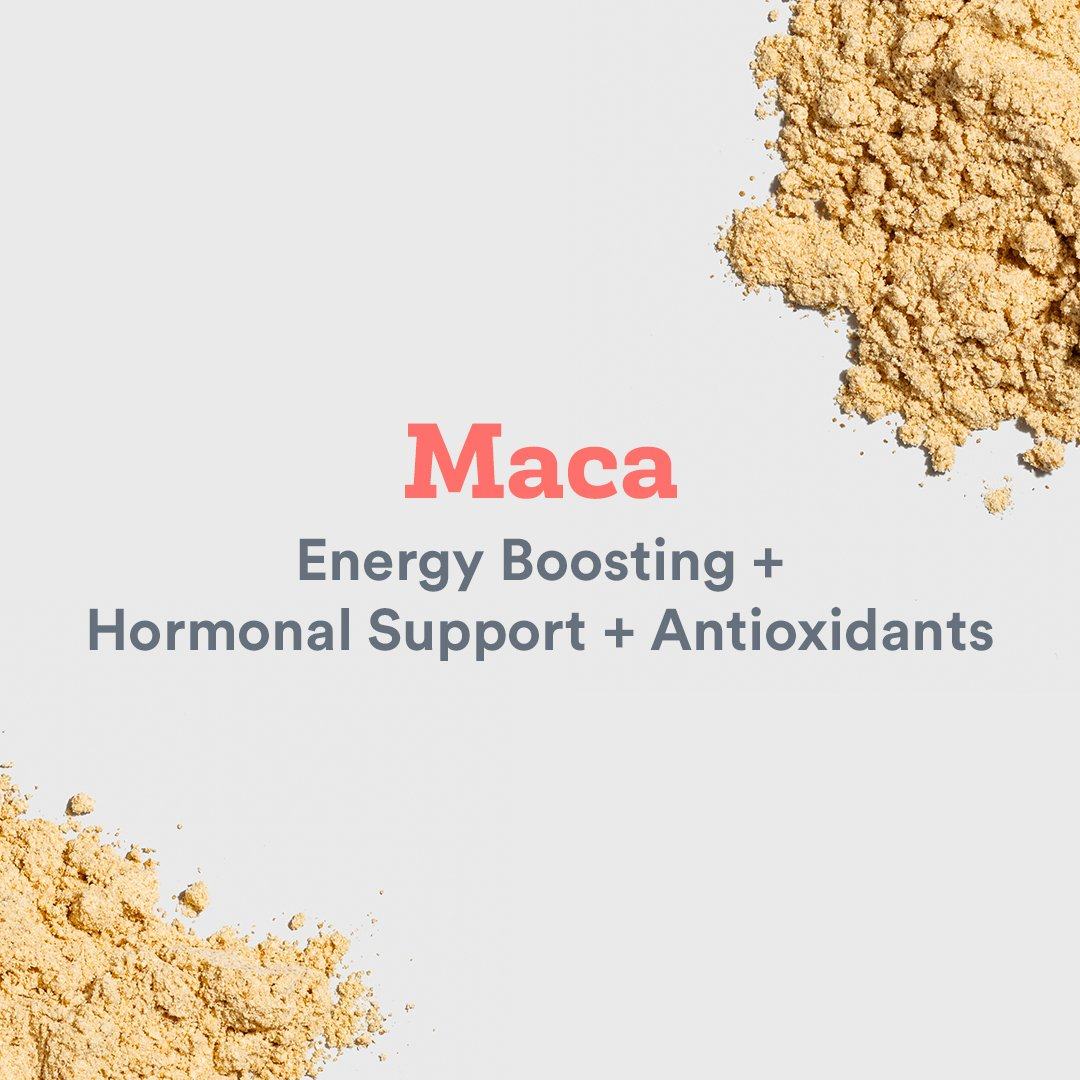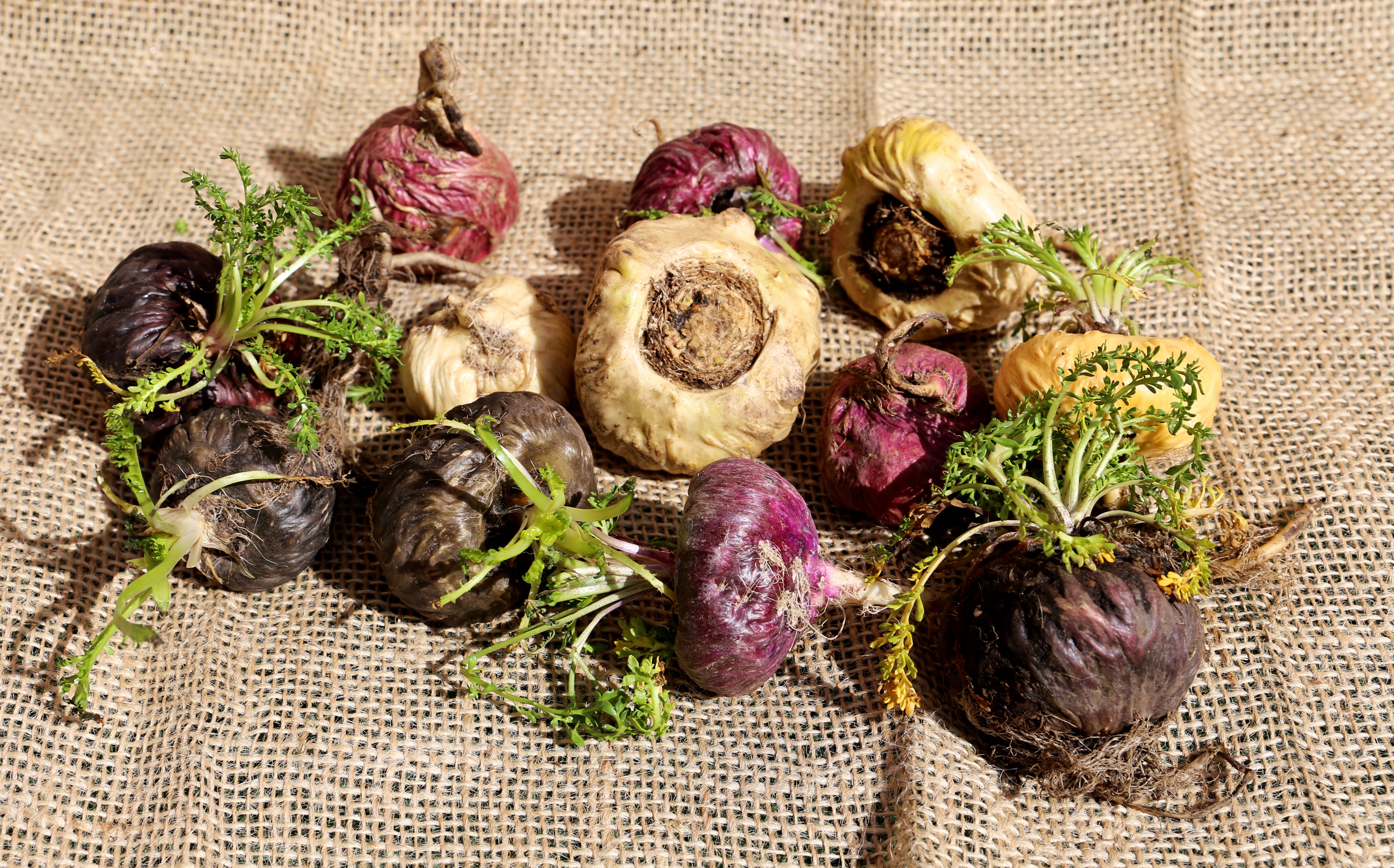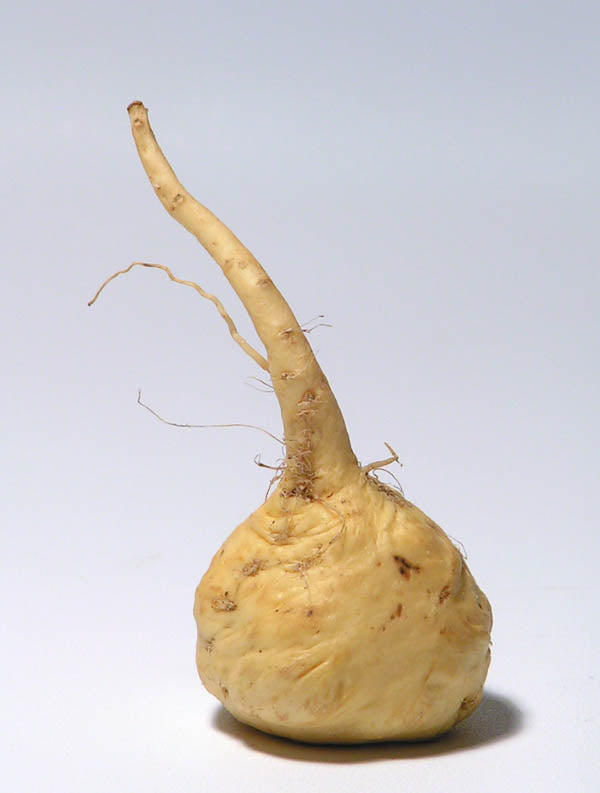
Scientific/Latin name: Lepidium meyenii
Also known as: Peruvian Ginseng, Ayak Chichira, Ayuk Willku, Maca Maca, Maino, Maka
Native to: Andes Mountains of Peru
Parts used: Root
Top benefits: Antioxidant Rich, Energy Enhancing and Cognitive Support

Maca, the Energizing and Antioxidant-Rich Root
Meet maca, your new favorite way to boost your energy levels, get more antioxidants, and support your hormone and brain health. This amazing little root has much to offer, so we’ll explain what it is, how it benefits your health, and how you can make maca a part of your everyday routine.
What Is Maca?
Maca, also known as Lepidium meyenii, is a Peruvian plant of the Brassica (mustard) family which grows exclusively in the central Andes at high altitudes, a habitat of intense cold and sunlight, and strong winds.
History of Use
Cultivated for more than 2000 years, Maca root, the edible part of the plant, was traditionally used by the Andean population for its nutritional and therapeutic properties, including to promote improved sexual function, male and female reproductive function, fertility, energy, alertness, mental concentration, mood and physical immunity.
The purported effect of Lepidium meyenii has been studied in a sexual health context. While the total number of trials remains too small to draw firm conclusions, studies demonstrate the use of maca for treating sexual dysfunction and erectile dysfunction, enhancing male fertility, and promoting healthy sperm counts and concentration.
Indeed, only a limited number of its purported benefits have been supported in evidence-based, scientific studies and systematic reviews conducted by researchers and healthcare professionals. These include its nutritional content and its energizing, antioxidant, fertility-enhancing and cognitive-supporting properties.
Dried Maca (unprocessed) is a very nutrient-dense food, made up of approximately 10% protein, 60% carbohydrates, 8.5% fiber and 2% fat. It contains almost all of the essential amino acids needed by humans, as well as a number of micronutrients, including iron, calcium, copper, zinc and potassium. (Nutrient levels vary depending on the type of Maca and how it is processed.) It is also considered to have adaptogenic qualities due to its demonstrated ability to help the body adapt to a number of stressors.
Thirteen main types of maca have been described that can be characterized by the color of their roots, being the edible portion of the plant. Recent studies have demonstrated that different types of Maca (according to its color - black, red or yellow) have somewhat different properties and health benefits. (1, 2, 3)
What Are the Health Benefits of Maca?
Suffice it to say that maca root is powerful. Maca root powder has been trusted traditionally, anecdotally, and now scientifically. Here are the benefits you can expect when you make room for maca.
Antioxidants
Antioxidants protect your cells against free radicals, which the body produces as a natural by-product of metabolism, as well as in response to external stressors like UV rays, pollution, and cigarette smoke. These free radicals damage healthy cells through a process called oxidative stress.
In both animal and cell models, Maca has been shown to be a source of antioxidants, compounds which play a vital, health-protecting role in human life. Antioxidants have been shown to help protect against various metabolic diseases, heart disease, brain disorders and age-related syndromes, as they help the body combat cellular damage caused by free radicals (reactive chemicals containing oxygen).
In these studies, Maca was shown to not only increase levels of important antioxidants including superoxide dismutase and glutathione, but it also significantly decreased cholesterol levels and also exhibited cellular neurobiological protection. (1, 2, 3)
While further research is needed to better understand how the antioxidants in Maca impact human health, these findings suggest promise for Maca’s protective role against chronic human diseases characterized by oxidative damage.
Energy
Maca’s superfood status exists because of its nutrient load (it’s absolutely loaded with vitamin C), as well as its ability to support healthy energy levels.
Maca is traditionally used by Andean Indians for its supposed ability to improve energy, and was used as a tonic for Inca warriors to increase their energy and vitality. However, there is only a limited body of research supporting these claims.
Supplementation with Maca extract for 2 weeks was found to significantly improve performance time in a 40 km cycling race. In another study of human subjects placed in two areas (the Peruvian highlands, close to where Maca is cultivated and where consumption is traditional, and at the lowland coast where Maca consumption is less common), supplementation with both red and black maca resulted in improvement in mood and energy (and even more so with red Maca, which has a higher concentration of GABA (Gamma-Aminobutyric Acid), a neurotransmitter that researchers suspect may boost mood or have a calming, relaxing effect on the nervous system).
In a number of animal model forced swim oxidative stress tests, three forms of Maca (yellow, fermented and gelatinized and extracted) were found to increase endurance, demonstrating its ability to improve physical stamina and preserve energy and thought to play an adaptogen-like role. (1, 2, 3, 4) (Interestingly, a clinical trial on pre-menopausal women similarly found that gelatinized Maca exhibited distinctive functions peculiar to adaptogens, suppressing stress hormone output and generally balancing hormone levels, reducing symptoms of menopause such as hot flashes and night sweats, and boosting energy.)

Cognitive support
No traditional use records of Maca’s effect on cognitive function have been found. Natives in the central Peruvian Andes claim that the use of Maca in children improves school performance, although they do not know which variety of Maca best impacts learning and memory.
Experimental studies in animal models suggest that Maca does in fact improve learning and memory. Three varieties have been studied (black, red, and yellow), and black Maca was the only variety to show significant biological effects. Maca was found to improve induced memory impairment and to decrease brain markers of oxidative stress, in both cases reflecting effects on the brain tied to Maca’s antioxidant capacity. (1, 2, 3)
Standard Maca Powder vs Gelatinized Maca Powder
Raw maca root is problematic for digestion for two key reasons.
- It contains complex starches which are almost impossible for our digestive systems to properly break down. This is why traditionally, whether for use as food or for medicinal purposes, maca root would be boiled before being consumed or ground into a powder.
- It also contains a high concentration of enzymes that interfere with the digestion and absorption of other foods we eat.
Enter gelatinized maca powder. ‘Gelatinization’ has nothing to do with gelatin! Rather, it refers to a cooking process that makes maca safer to consume and allows us to reap its benefits.
During gelatinization, maca roots are heated under pressure to break down the starch and neutralize the problematic enzymes. The pulp is then dried and ground down into a powder to create gelatinized maca powder.
Making the Most of Your Maca
Like most everything worth having, most of the benefits of maca won’t be experienced overnight. The key is consistency. Using maca daily will help you notice the beneficial effects sooner than just using it on occasion.
More Energy to Maca-rena
Supporting natural energy levels is important, and most of us would agree we could use a little help having more energy to power through our days. One of the benefits of maca root is its effect on energy modulation and its ability to help enhance cognitive function and protect our cells from oxidative stress.
The health research presented in this article is for informational use only. It is not a replacement for professional health advice and should not be construed as a recommendation of specific products. The products sold on this website are not intended to diagnose, treat, cure, or prevent any disease. This information does not provide dosage or format recommendations or possible drug interactions, and accordingly, should be used with the advice of a qualified health care practitioner.
If you are pregnant or breastfeeding, talk to your doctor before trying maca.
